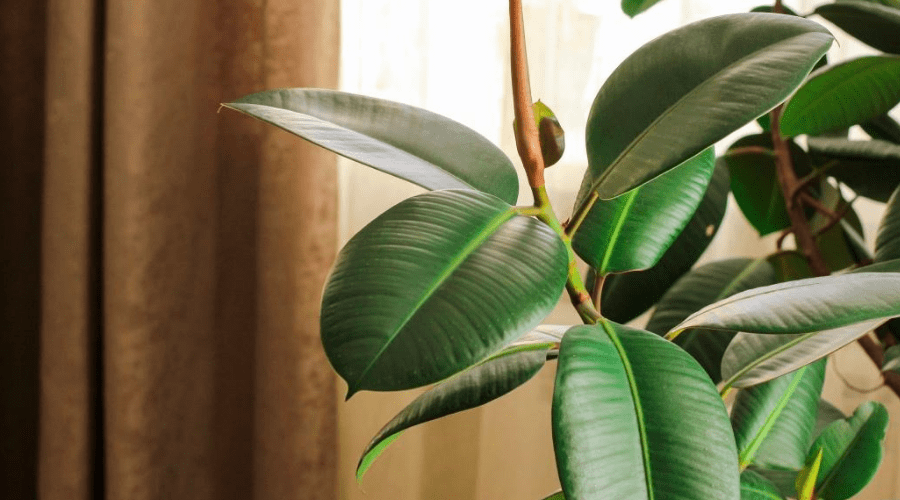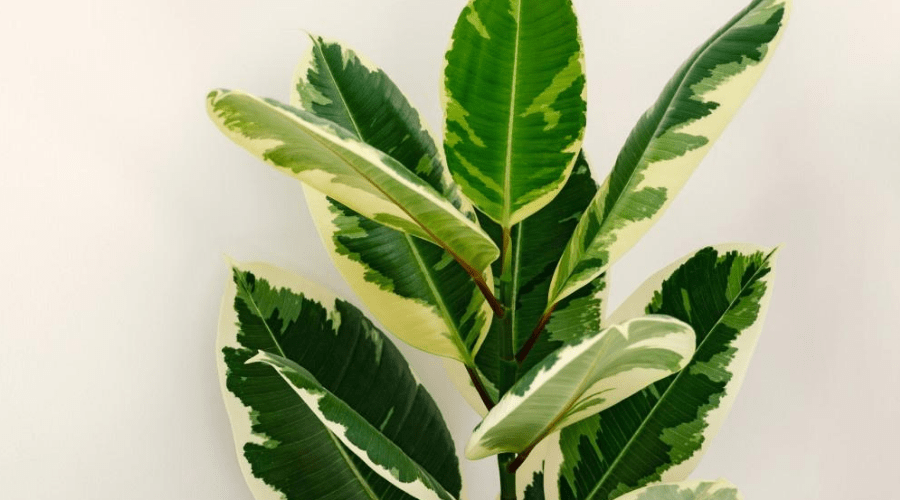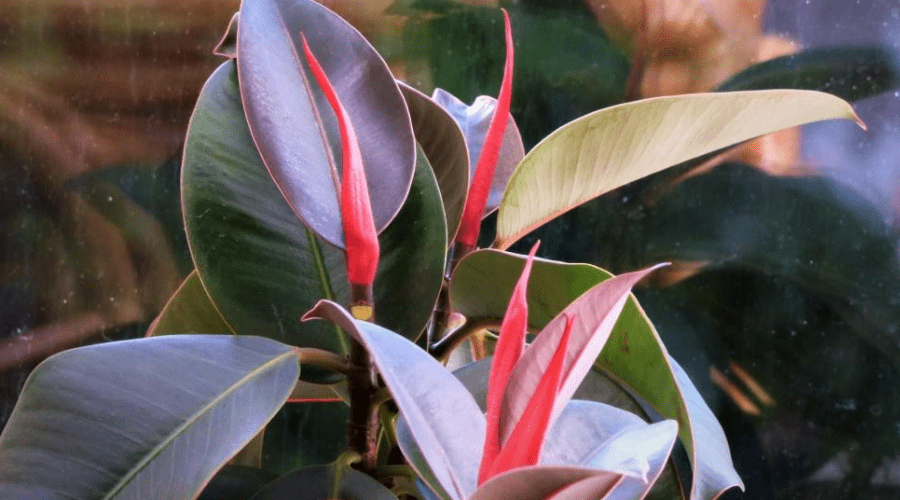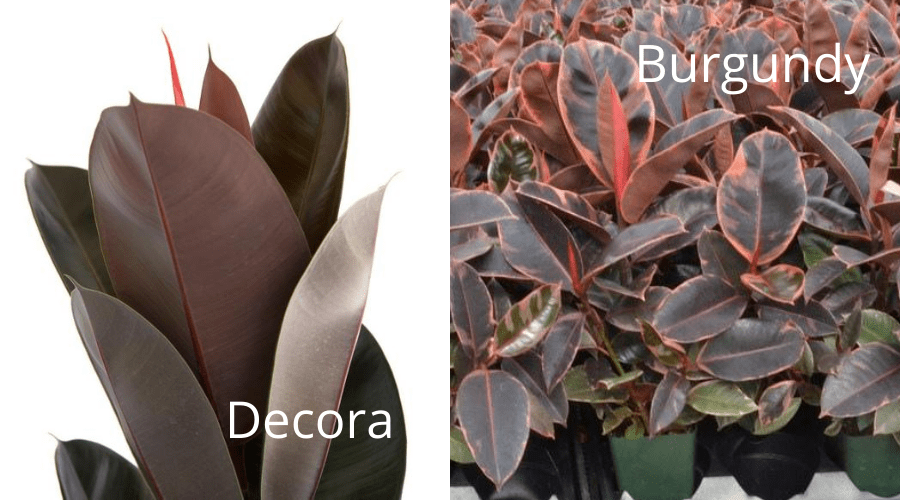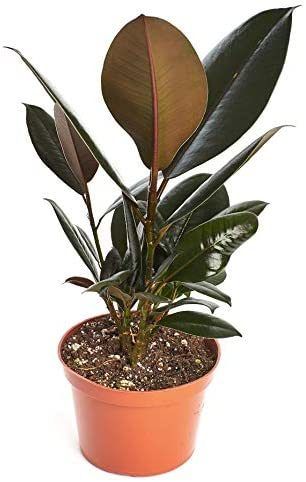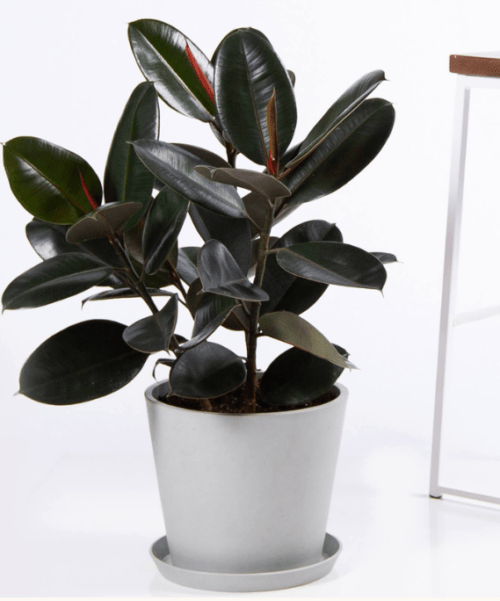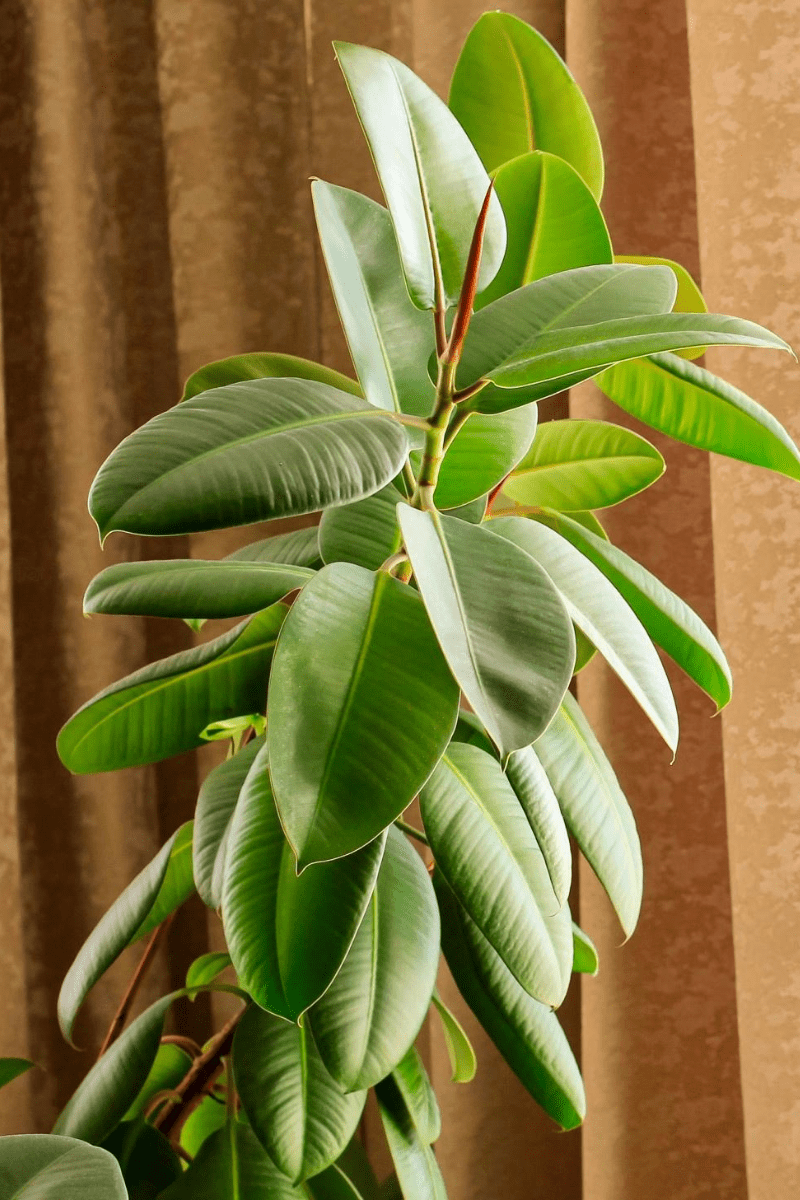Ficus elastica, also known as a rubber tree, is a great household plant for people who want some greenery indoors, but don't want to fuss over a picky plant. A rubber plant requires patience —they grow quite slowly—but with proper care, yours can live for decades. We’ve rounded up the best info and tips for indoor rubber tree care, including light, water, and fertilizer needs; how to propagate, divide, and prune; and even the best places to buy the rubber plant that best suits your needs.
Rubber Plant Details
Ficus elastica
AKA: Rubber tree, ficus
Light: Indirect, low to bright light
Water: Infrequently, only when soil is dry 1.5 to 2 inches below the surface
Temperature range: 60-72° F
Height: 12-72 inches
Fertilizer: Weak, infrequent.
Special care: Leaves should be wiped clean or dusted as needed.
Rubber Tree Benefits
Every plant has benefits! People feel better mentally when spending time in gardens or keeping indoor plants, and houseplants can reduce indoor dust accumulation by as much as 20%. However, the rubber tree does have its specific set of perks.
- It is a low-maintenance plant and it’s perfect for beginners or for people who are often away from home and can’t handle a plant that requires intensive care. It can easily adapt to poor light conditions and doesn’t require watering as often as other plants do. As far as the soil is concerned, it doesn’t require that much fertilization. Even more, should you plant a rubber tree in soil rich in organic matter, you can forget about fertilizing it for a longer period of time. This is a carefree way to experience the benefits of plants without significant time or investment.
- If you are short on cash, know that a rubber tree is both inexpensive and doesn’t require much investment in stuff needed to care for it. If you want more rubber trees, all you have to do is propagate through cutting and you can have as many as you want.
- Its leaves are very glossy and have a wax-like surface, which makes the plant super easy to clean. Whenever dust settles on the leaves of a rubber tree plant, all you have to do is wipe them clean with tissues or cloth.
- Unlike other plants that can trigger allergies in people who have respiratory problems, the rubber tree isn’t allergenic at all. Rubber trees don’t produce pollen, which is one of the main contaminants that trigger allergic reactions. This is one of the reasons you’ll find rubber trees in places with high traffic, like hospitals or hotel lobbies.
- Like plenty of other houseplants, rubber trees do a very good job of absorbing air pollutants, leaving your home with fresher air. According to several studies conducted on the matter, rubber trees can remove carbon monoxide, formaldehyde, and other VOCs.
How to Care for a Rubber Tree
Rubber trees are among the least pretentious of indoor plants. With proper care—which is to say, absolutely minimal care, even for the novice plant parent—you can have a rubber plants that thrives for years. Some simple care rules to remember:
- While the rubber tree enjoys bright light, it should never be placed directly under the sun’s rays. If you have a window with sheer curtains, that would make a perfect spot for this plant. Even if it likes light, it can’t stand direct sunlight.
- The watering process of the rubber tree will depend on the season. Since it does most of its growth during spring and summer, these are also the seasons when the plant needs more water. Overwatering is often an issue, so your main goal is to keep the soil moist but definitely not soggy. During the colder seasons, you will only need to water the rubber tree a maximum of two times per month.
- Misting the leaves of the rubber plant is also important. Some people choose to wipe them with a damp cloth, which is also a good solution. Be careful, as over watering the soil or the leaves can end up causing the leaves to turn brown or yellow and die. You want to mist the leaves more often if the air inside your home is too dry.
Rubber Tree Varieties
As you can imagine, there isn’t just a single type of rubber tree out there, and while this plant does have its varieties, not all of them are commonly grown in households.
One of the most common varieties of rubber trees grown indoors is Robusta, shown above, which is also the one that resembles the original the most. New growth is bright red and matures into the dark green leaves that are familiar to most as the rubber plant's standard foliage.
Decora is another variety that can be distinguished from Robusta thanks to its larger and broader leaves. These leaves also have a center vein which is reddish in color, and tend to have a darker red cast to the underside of the leaves as well.
There is another variety known as Burgundy. This particular type of rubber tree comes with dark leaves, sometimes variegated, that will often appear dark reddish in color or shades of red and pink alongside the dark green of standard ficus elasticas.
Rubber Tree Propagation & Growth Rate
People choose to propagate a rubber plant either because they want more of them or they want to give new plants to their family or friends. Fair warning: Propagating the rubber tree might not always be successful, but the process itself is as simple as cutting a piece and potting it.
Cuttings
When you proceed to cut part of the rubber plant, you have to make sure that the sap is allowed to dry. Then, you can dip the cutting in a rooting medium, but it is advisable that you use a heating pad and place the pot on top of it. This will increase your odds of success, as warmer soil tends to promote growth in this species.
Air Layering
There is also a method called air layering that involves making a cut in your healthy rubber tree plant. Then, place the cut end in a bottle of water, affix it snugly to the tree, and keep it full for the next few weeks. When you have a healthy rooting, usually after 30-45 days, you can simply cut the rooted branch away and plant it in its own pot. This video shows the entire air layering process from cutting the branch through planting the new tree.
Where to Buy Rubber Trees
Rubber trees are really easy to find, and you can choose to purchase them from nurseries, specialized gardening shops, or third-party retailers, such as Amazon.
Ficus Elastica Burgundy Rubber Tree Plant in 6-inch Grow Pot
Your Rubber Tree will grow best with consistent, bright, filtered light—which produces the dark, burgundy color of the leaves. Easy care, shipped live and healthy to your doorstep.
Naturally, not every store will have all varieties of rubber trees available, so you need to consider which one you fancy the most and then search for a trusted seller from that point on. You can buy rubber trees from shops such as Brighter Blossom, The Sill, or Planterina.
Burgundy Rubber Tree (12-inch Ecopot)
The Burgundy Rubber Tree is a spectacular indoor plant with thick, glossy leaves that range from a rich burgundy red to almost black. It is strong and sturdy but doesn’t like change—so pick a bright spot and let it do its thing! Native to the rainforests of India and South America, it can quickly adapt to common indoor temperatures. Given enough bright light, ample humidity, and with careful watering, your Rubber Tree will thrive in your home, filling the corner of a room within a few years. This plant is 26-38 inches tall, including pot, at the time of shipment.
Rubber Tree FAQ
How Fast Does a Rubber Tree Grow?
The growth of a rubber tree is a lengthy process if we’re referring to the time it takes for the plant to reach its maximum height. During every growing season, the plant usually gains another 24 inches in height. Since the maximum height for this plant is between 50 to 100 feet, it can take about 13 years for the plant to mature.
How Can I Tell if My Rubber Tree is Healthy?
By looking at the leaves. When you notice that the leaves of the plant are starting to get brown and droopy or mushy, then you are most likely over watering your plant. When the plant is no longer able to absorb more water, the soil becomes saturated and you might even notice a musty smell. Reviving the plant once this occurs isn’t that complicated. Leave the soil to dry completely before watering it again. If you think that the roots are rotten, you can remove the plant from the soil, but out any rotten roots, and replant it. The roots of a healthy rubber tree are white and firm.
Why are Leaves Falling Off My Rubber Plant?
This often occurs when the plant isn’t getting enough light or doesn’t have sufficient humidity. To solve the first problem, make sure that you place the plant in the brightest spot in the house, while avoiding direct sunlight. As for the second problem, you can mist the leaves of the plant to raise their humidity level.
Can You Propagate a Rubber Tree From a Leaf?
No. A rubber tree plant will never grow from a simple leaf cutting but from a stem one. If you want to propagate a rubber tree plant, read the “Rubber Tree Propagation & Growth Rate” section for more information.
Conclusion
With its beautiful waxy leaves and its ability to grow up to more than 50 feet in height, the rubber tree plant is one of the best houseplants that you can invest in. Not only is it inexpensive, but it’s also rather easy to propagate if you ever want to have more than just a plant or want to gift it to your dear ones.
It is not pretentious in terms of care, as days go by and you won’t have to do anything to look out for it. There are multiple benefits to having a rubber tree plant, which is known for its ability to purify the air inside the house.

